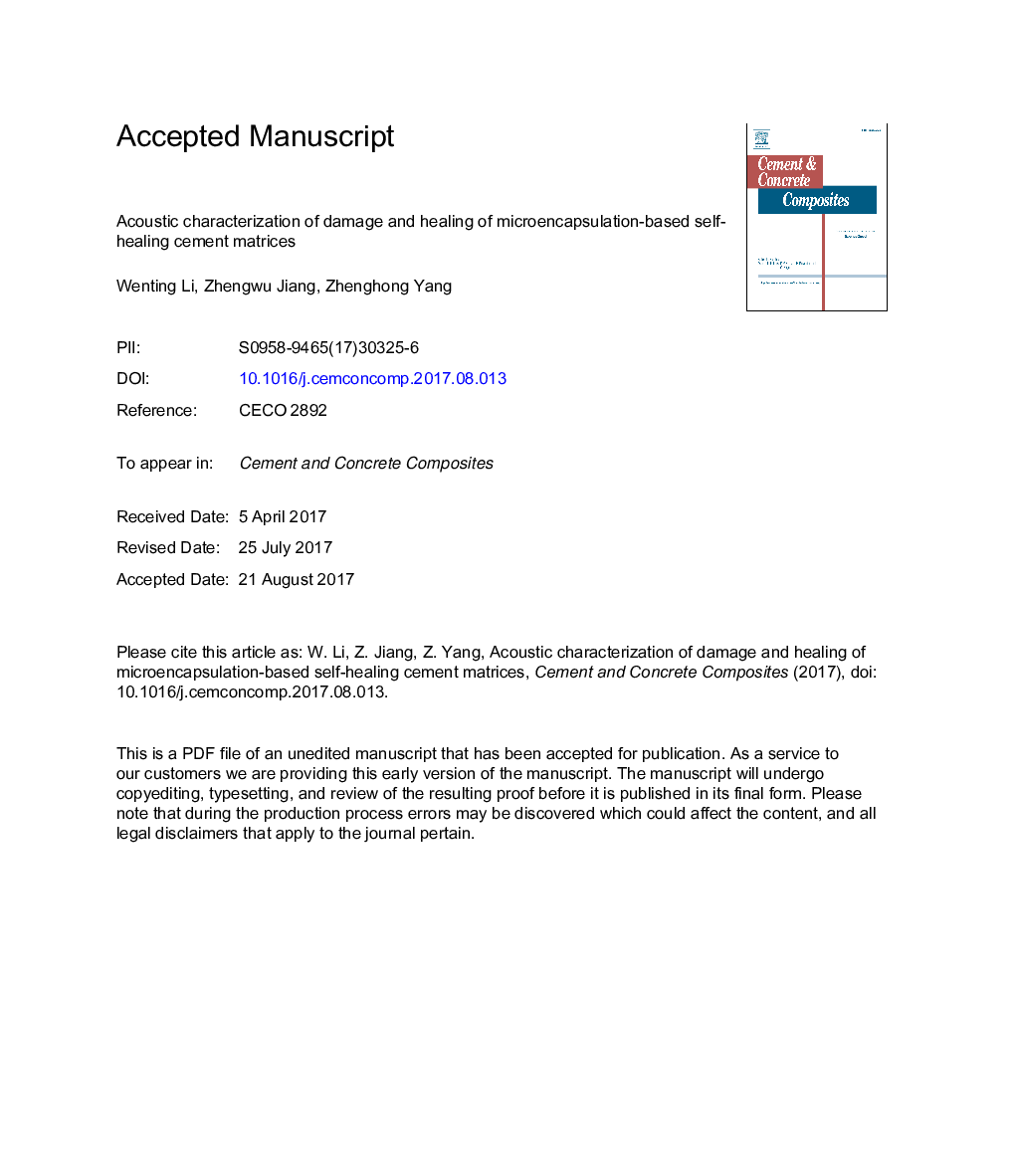| Article ID | Journal | Published Year | Pages | File Type |
|---|---|---|---|---|
| 5436749 | Cement and Concrete Composites | 2017 | 27 Pages |
Abstract
Self-healing of cracks in cementitious composites is of great significance to improve the serviceability of concrete structures. In this study, poly urea-formaldehyde (PUF) microcapsules enclosing epoxy resins were synthesized. The damage- and healing process of cement paste incorporating microcapsules was in situ detected by acoustic emission (AE) technique, in which passive AE and active AE were combined to provide complementary information about the damage and crack formation. The two representative AE signals, i.e., matrix cracking and debonding of the interface, were used as calibration for further AE post-processing analysis. The effects of the concentration of microcapsules and the level of pre-damage were investigated. The results revealed the distinguished cracking mechanisms according to the differentiated feature of the signals in terms of the temporal and spectral AE descriptors. The plot of average frequency (AF) versus RA index (rise time/amplitude) confirms that the cracking modes contribute to the characteristic spectrum.
Related Topics
Physical Sciences and Engineering
Engineering
Industrial and Manufacturing Engineering
Authors
Wenting Li, Zhengwu Jiang, Zhenghong Yang,
